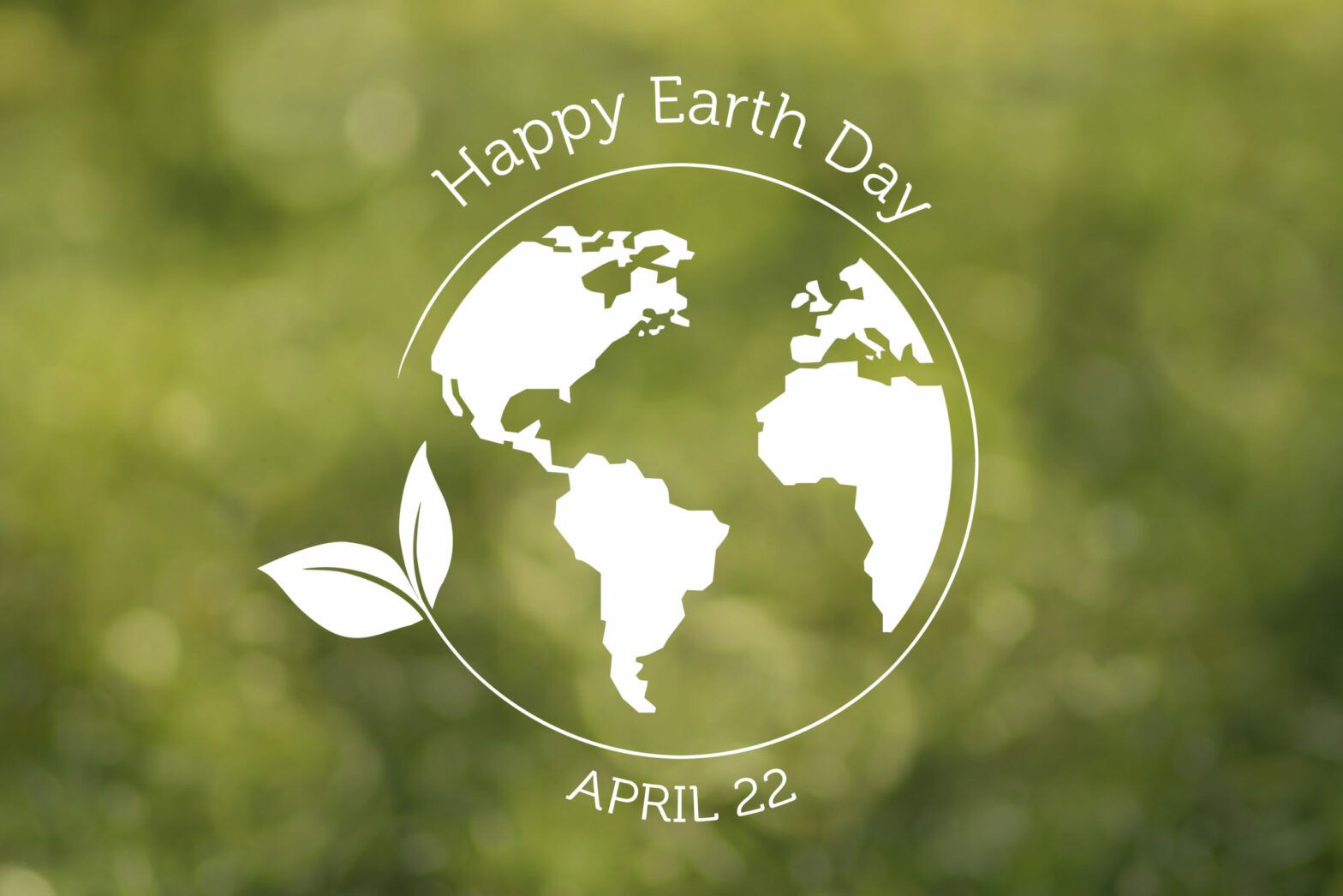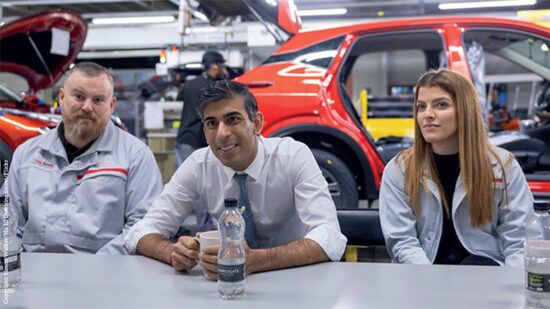Earth Day was launched 50 years ago today to propel the environmental movement and drive transformative change for people and planet.
Today, the Earth Day network consists of more than 75,000 partners in over 190 countries to drive positive action for the environment.
ESG Clarity asked members of the investment management industry for their reflections on five decades of educating and promoting the issues surrounding climate change, plastics and pollution, science and conservation, and the challenges for these issues in light of the global covid-19 pandemic.
Cindy Rose, head of responsible capitalism at Majedie:
“On the 50th anniversary of Earth Day, we need to remember the important role that we all must play in preserving the natural environment for tomorrow’s generations. As supporters of Climate Action 100+ and the Task Force on Climate-related Financial Disclosures, Majedie is committed to taking the action needed to reduce carbon emissions and to keep the rise in global temperatures to less than 2 degrees Celsius, in line with the Paris Agreement. It is vital that we consider environmental impacts in every investment we make and that we help our investee companies reduce their environmental footprint and deliver positive impacts throughout their businesses.”
Quentin Fitzsimmons, portfolio manager of the T. Rowe Price Global Aggregate Bond Fund:
“Since the issuance of the first green bond just over a decade ago, the market has gone from strength to strength. A record $255bn of bonds were sold for the purpose of financing environmentally friendly projects and activities in 2019, an increase of more than 45% from the previous year and more than three times the amount issued in 2016.
“Despite spectacular growth, the green bond market remains small in comparison with the overall size of the bond market, although its share is growing. One of the factors holding it back has been a lack of liquidity, but there are signs of improvement on this front – with the boom in green bond issuance helping to increase liquidity.
“In a further positive sign, liquidity in the secondary market has picked up in the past year thanks to jumbo deals from France and the establishment of liquid ‘green’ benchmarks in countries like Ireland. Against this backdrop, we believe it may be the right time to possibly start integrating a layer of green bonds into fixed income portfolios. As such, in the event we can identify a green bond with the same valuation characteristics as a similar equivalent conventional bond, it is likely to be considered as a preferred selection in some of our portfolios.”
Masja Zandbergen, head of sustainability integration at Robeco:
“Earth Day falls during an unprecedented time for the global economy. The coronavirus crisis has led to a shift in interest from investors, moving from climate change to social issues. I agree that health, safety and job security are the most important issues for people right now. However, it is essential that we continue to focus on the broad spectrum of ESG issues with a continued focus on climate risk.
“The global carbon project estimates that carbon output could fall by more than 5% this year. It is the first time since the global financial crisis (-1.4%) this has happened. However, in the past we have seen that after a dip due to a decline in economic activity, if nothing changes in the system, emissions come back with a vengeance when economic activity picks up again. Not to mention the vast amounts of CO2 that has already accumulated in the earths’ atmosphere.
“Where the coronavirus created a world-changing event that few saw coming, climate change and loss of biodiversity are slowly moving trends, that we can all see coming. And they can have equally detrimental effects on our societies and economies. So without losing sight of the pressing social issues we face now, and the interaction between all ESG issues, we better remain focused on solving climate change and keeping biodiversity. The earth can do without the economy, but the economy cannot do without the earth.”
Aaron Hay, lead engager – fixed income and Lisa Lange, engagement professional for EOS, at Federated Hermes:
“Plastic and packaging pollution is one of the most pressing global environmental threats and has become a material issue for investors. Only 14% of estimated plastic packaging is recycled globally. Of the remainder, around 14% is incinerated, 40% is landfilled, and 32% is ‘leaked’ to the environment.
“Covid-19 will undoubtedly result in many businesses having to rethink their supply chain risk and they should use this opportunity to look at the wider risks to their long-term business, including the impact of their plastics and packaging use. We expect companies to move from treating plastic as an externalised risk, to developing strategies that consider it as a resource requiring responsible management and value preservation – in partnership with suppliers, customers processors and regulators. Without a cogent, disclosed journey on the sustainability of plastics and packaging, we believe many companies will face significant scrutiny from investors and stakeholders.”
John Streur, president and CEO of Calvert Research and Management:
“Why do, we as humans, have such a hard time grappling with these risks? Why didn’t we prepare for a pandemic, even when researchers laid out the problem for us? Why aren’t we dealing effectively with climate change, even though researchers around the world have been ringing the alarm bells for a considerable period of time and we’ve had a full day drawing attention to the needs of the planet and environmental stewardship, Earth Day, since 1970?”
Mark Lewis, global head of sustainability research at BNP Paribas Asset Management:
“Earth Day 2020 today is the 50th anniversary of the first ever Earth Day, a global event to highlight support for environmental protection, as well as being four years to the day since the signing of the Paris climate agreement.
“This year’s Earth Day has climate action as its theme and focuses on the urgent need to act decisively to meet the goals of the Paris accord, given the mounting challenges that climate change presents. The covid-19 pandemic has served as a stark reminder of the cost of humanity’s sprawling environmental footprint, whilst also revealing that it might be easier to transition to a more sustainable world than we thought.
“The response of governments, NGOs and the public to an imminent threat to society has been admirable, although they need to respond to the climate crisis with the same level of urgency. Although the global economy has been all but temporarily shut down to save lives, the climate crisis demands a far less extreme, albeit more long-lasting, response. However, delay will be fatal, as without action now to keep global warming well below 2° C , there will be no extreme measures that we can take in the future to prevent a tragic loss of life.”
Thomas Sørensen, portfolio manager of Nordea’s Global Climate and Environment strategy:
“The coronavirus pandemic will absolutely not jeopardise the climate and environment megatrend. The pandemic is the world’s primary focus right now, as it should be, but normal life will eventually resume. Cars and planes will still be needed, and manufacturers will continue to improve energy efficiency.
“We also do not believe the low oil price will damage the shift into alternative energy. We saw sharp oil price falls in 2015, but the alternative energy sector continued to grow. The indiscriminate sell-off we have seen has created opportunities to position our strategy in strong, market-leading businesses for when we come out the other side.
“We currently see significant opportunities for companies focusing on solutions within resource efficiency and environment protection. Saving electricity, using less resources or deploying more efficient products translates directly into a better value proposition for clients. In addition, we believe medium-sized growth companies are often better positioned to capitalise on climate and environment solutions. Many of these innovators have strong industry positioning and offer specialised services to clients.”
Therese Kieve, stewardship analyst at Sarasin & Partners:
“With industrial and commercial activity on pause due to coronavirus, a striking set of images have emerged: Venice, with crystal clear canals; a map of Hubei showing vastly reduced air pollution levels. The world’s first priority at this time must be to control the spread of the virus. However, these images help us visualise what less damaging patterns of consumption might mean for the environment.
“It is right for companies and governments to devote their time and resources to tackling the immediate crisis, but we must not lose sight of the bigger picture. One thing the pandemic has shown us is the extraordinary ability of governments to mobilise for action. We have an opportunity to learn from this crisis. Concerted action from companies and governments will give us the best chance of a sustainable future.
“One of the key challenges to a lower-waste world is fast fashion. Fast fashion is not only damaging from an environmental perspective, but also raises social concerns. Cheap clothes are often produced in poorer countries, where workers receive very low pay and few rights. A societal move towards repairing, re-wearing or renting clothes could help encourage more sustainable behaviour. We need governments and companies to do more to deliver this change.”
Ben Guest, managing director of the Gresham House New Energy division:
“Energy generation in the UK is undergoing fundamental change. Older coal-fired stations are being decommissioned and renewable energy is increasing its share of the energy mix. The intermittency of renewables puts pressure on the network to match supply and demand in real-time. We believe energy storage is an optimal solution to this problem.
“Investing in operational storage offers investors an alternative and complementary route to renewables in supporting and facilitating the migration to a low-carbon economy – while aiming to deliver a higher yield than other more established opportunities.
“This technology is designed to sit ‘hand-in-glove’ with growing renewable generation capacity, at a time when conventional generation is in decline.”
Liam Thomas, CIO of the US Solar Fund:
“During the rise of renewables, solar energy in the UK has – unsurprisingly for such a cloudy country – often taken a backseat to wind power generation. However, solar has come to the fore in recent years, with total UK solar production capacity now about 6 gigawatts.
“Despite this, the closure of the Renewables Obligation subsidy regime to all new constructions in 2017 raised investor concerns around all types of renewables in the UK. Only one utility-scale installation has been deployed in Britain since October 2017, increasing utility-scale capacity by just 0.1%.
“If investors are apprehensive about renewables in the UK, the solar market in the US is booming, with total installed utility scale capacity of 39 gigawatts at Q2 2019. It is not just the impact of subsidies that drives US solar investment, but much higher levels of sunshine. California alone receives three times as much sun as the UK. Moreover, the large land area of the US allows investors to take advantage of cheap cost of land and location diversification. This diversification provides better risk mitigation in the event of localised natural disaster.”
Nick Wood, CEO of Resonance Asset Management:
“Climate change represents an enormous humanitarian challenge to protect our increasingly depleted fresh water sources, reduce pollution levels in the atmosphere and limit the global temperature increases. Over the past decade, the investor community has woken up to become increasingly aware of climate risks and opportunities.
“Climate change is creating large and growing pool of investment opportunities for fund based investments, in particular for mid-sizes assets.
“Energy is a $7trn business and water a $250bn industry. This entails significant investment potential as both sectors change and evolve in response to climate change and economic growth. We see significant opportunities across a variety of sectors including water treatment, batteries, resource recovery, and anaerobic digestion. As demand for clean energy and water continues to increase, the opportunities to invest in projects and companies delivering crucial solutions continue to increase.”
John Wilson, director of corporate engagement, Calvert Research and Management:
“This Earth Day, our engagement may be more vital than ever because the covid-19 crisis has exposed just how important it is for companies to be prepared and resilient in the face of global disruption. These risks are not just risks to society, but also to the companies we invest in. They include the decline in biodiversity, the importance of sustainable agriculture, protecting water resources and global climate change. These long-term environmental issues may be important to companies but the concentration on management’s attention focuses away from these issues and more towards traditional business issues like earning and market share.
“This is where engagement becomes so important – to bring back the focus and the attention of management on these issues. We bring a credible perspective because our interests are aligned with management in the long term. We can reframe these issues as business problems and not just environment problems.”








